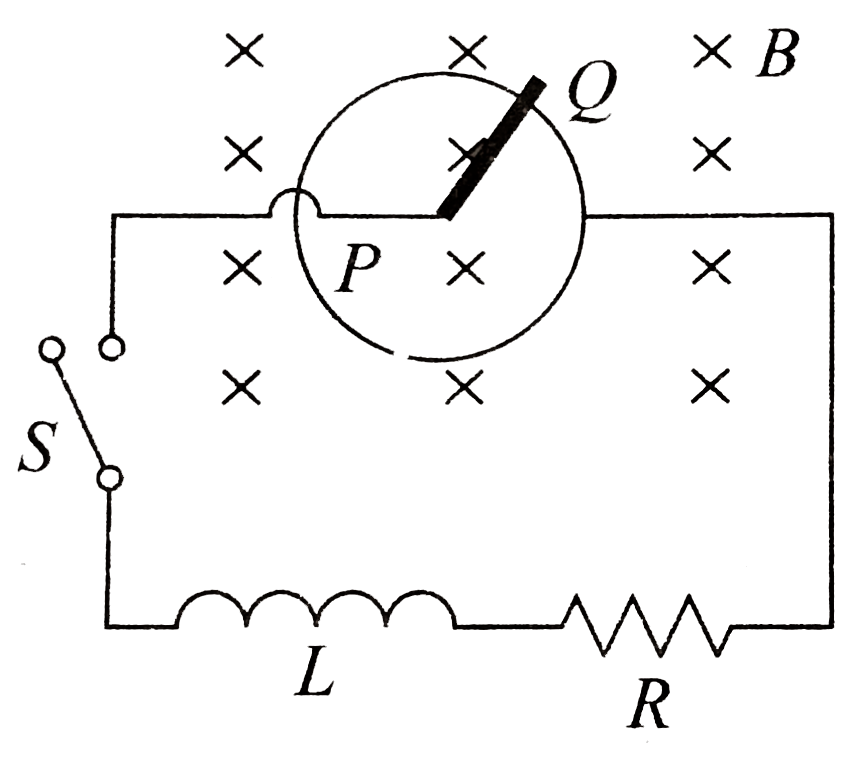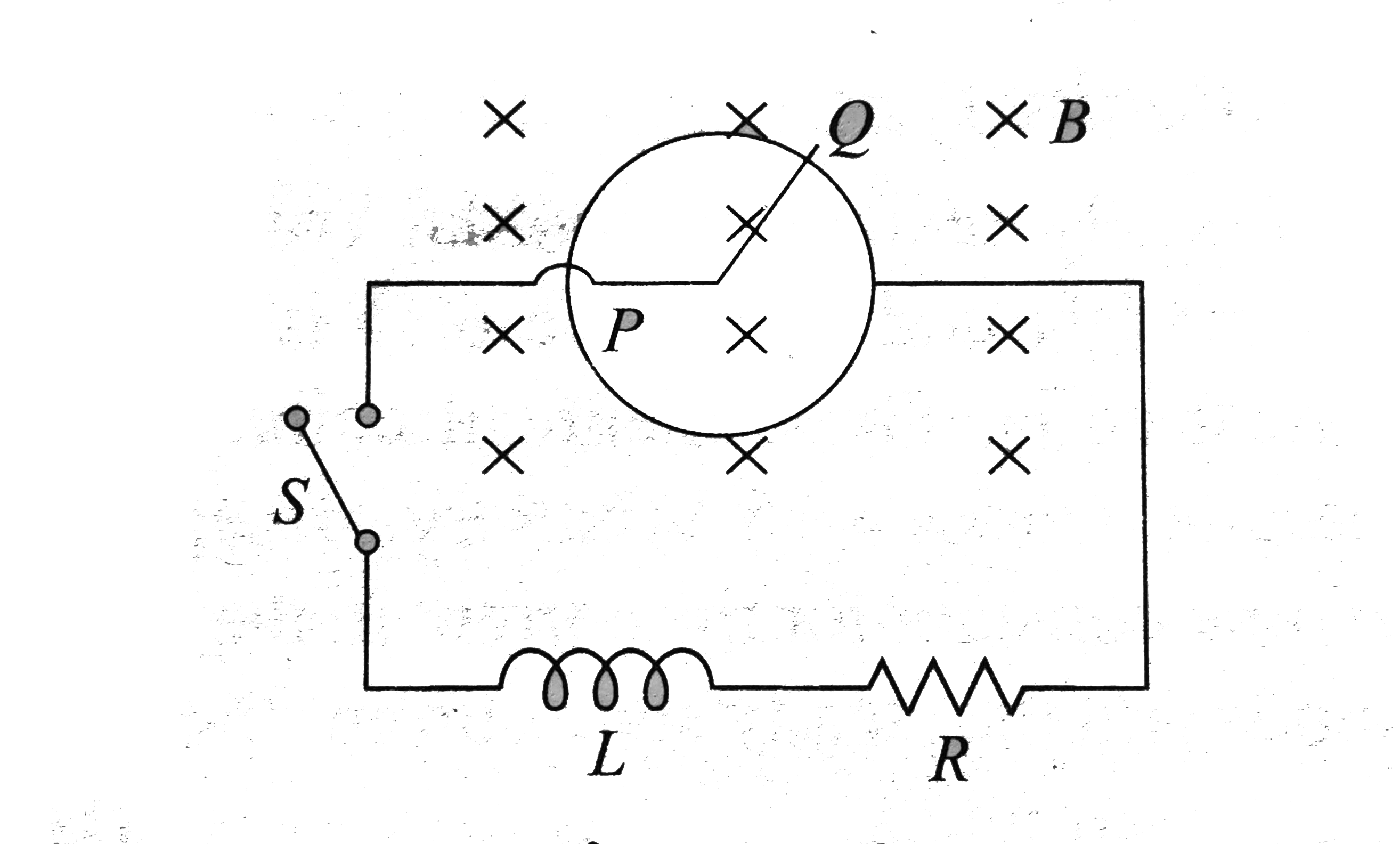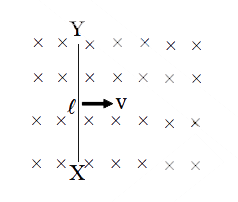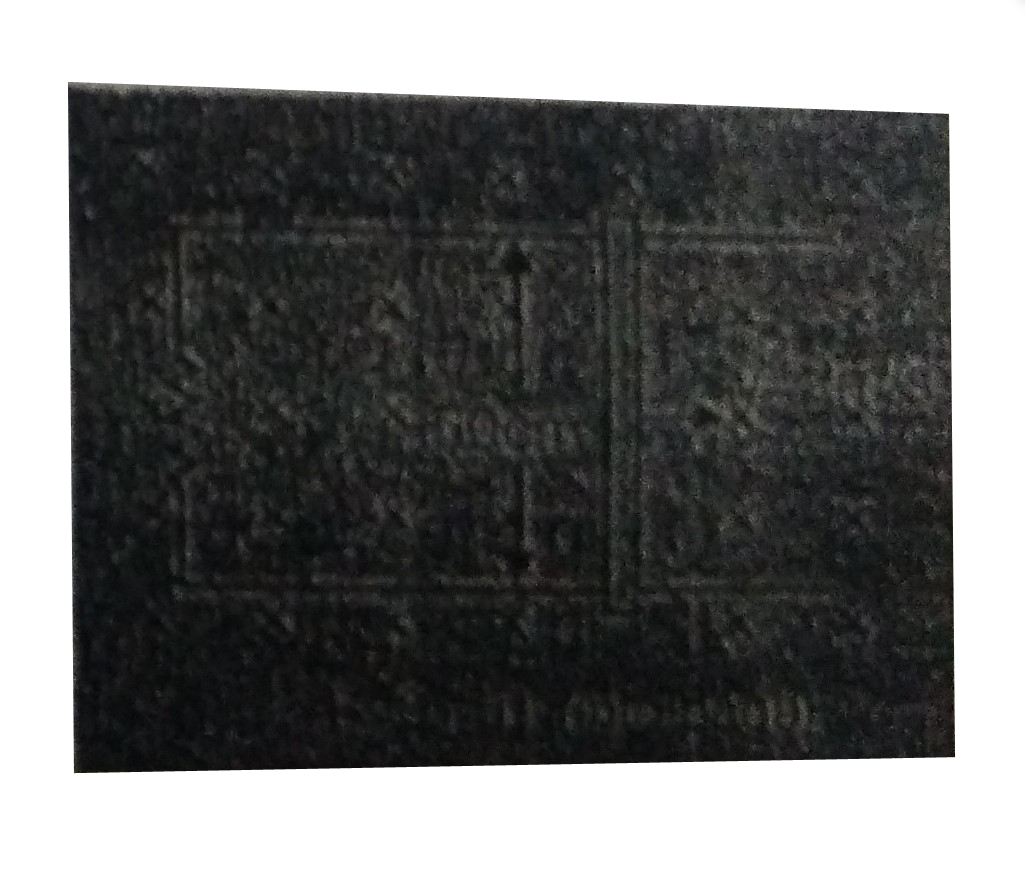The diagram shows a circuit having a coil of resistance R=2.5(Ω) and inductance L connected to a conducting rod PQ which can slide on perfectly conducting circular ring of radius 10 cm with its centre at 'P'. Assume that friction and gravity are absent and a constant uniform magnetic field of 5 T exist as shown in Fig.

At t = 0, the circuit is switched on and simultaneously a time varying external torque is applied on the rod so that it rotates about P with a constant angular velocity 40rad/s. Find magnitude of this torque (in milli Nm) when current reaches half of its maximum value. Neglect the self-inductance of the loop formed by the circuit.
The correct Answer is:5
Induced emf = 12Bωl2
Maximum current : i0=Bωl22R
Torque about the hinge P is
τ=∫1i(dx)Bxd⇒τ=12iBl2
put i=i0/2, we get , τ=B2ωl48R=5mMm.
Topper's Solved these Questions
- MISCELLANEOUS VOLUME 5BOOK - CENGAGE PHYSICSCHAPTER - MISCELLANEOUS VOLUME 5EXERCISE - Linked Comprehension
84 Videos
- MISCELLANEOUS VOLUME 3BOOK - CENGAGE PHYSICSCHAPTER - MISCELLANEOUS VOLUME 3EXERCISE - True and False
3 Videos
- Moving charges and magnetismBOOK - CENGAGE PHYSICSCHAPTER - Moving charges and magnetismEXERCISE - Question Bank
20 Videos
Similar Questions
The diagram shows a circuit having a coil of resistance R=10Ω and inductance L connected to a conducting rod PQ which can slide on a perfectly conducting circular ring of radius 10 cm with its centre at 'P' Assume that friction & gravity are absent and a constant uniform magnetic field of 5 T exists as shown in figure. At t=0 the circuit is switched on and simultaneously a time varying external torque is applied on the rod so that it rotates about P with a constant angular velocity 40 rad//s Find magnitude of this torque (in mu Nm) when current reaches half of its maximum value. Neglect the self inductance of the loop formed by the circuit.

View SolutionFigure shows a circuit having a coil of resistance R=2.5Ω and inductance L connected to a conducting rod of radius 10cm with its center at P.

Assume that friction and gravity are absent and a constant uniform magnatic field of 5T exists as shown in figure. At t=0, the circuit is switched on and simultaneously a time-varying external torque is applied on the rod so that it rotates about P with a constant angular velocity 40rads−1. Find the magnitude of this torque (in mNm) when current reaches half of its maximum value. Neglect the self inductance of the loop formed by the circuit.
View Solution
Knowledge Check
A coil having a resistance of 50.0Ω and an inductance of 0.5H is connected to an AC source of 110, v,50Hz.
The rms current in the circuit isA1.5AB0.67AC1AD3AA small conducting rod of length l, moves with a uniform velocity v in a uniform magnetic field B as shown in fig __
 AThen the end X of the rod becomes positively chargedBThe end Y of the rod becomes positively chargedCThe entire rod is unevenly chargedDThe rod becomes hot due to joule heating
AThen the end X of the rod becomes positively chargedBThe end Y of the rod becomes positively chargedCThe entire rod is unevenly chargedDThe rod becomes hot due to joule heatingA metallic rod completes its circuit as shown in the figure. The circuit is normal to a magnetic field of B=0.15 tesla. If the resistances of the rod is 3Ω the force required to move the rod with a constant velocity of 2m/sec is-
 A3.75×10−3NB3.75×10−2NC3.75×102ND3.75×10−4N
A3.75×10−3NB3.75×10−2NC3.75×102ND3.75×10−4N
The circuit shows a resistance, R=0.01Ω and inductance L=3mH connected to a conducting rod PQ of length l=wm which can slide on a perfectly conducting circular arc of radius l with its center at P. Assume that friction and gravity are absent and a constant uniform magnetic field b=0.1T exists as shown in the figure. At t=0, the circuit is seitched on a simultaneously an external torque is applied on the rod so that it rotates about P with a constant angular velocity ω2rad/sec. Find the magnitude of this torque (inN-m) at t=(0.3In 2) second.

View SolutionThe circuit shows a resistance R=0.01Ω and inductance L=3mH connected to a conducting rod PQ of length I=2m which can side on a perfectly conducting circular arc of radius I with its centre at P. Assume that friction & gravity are absent and a constant uniform magnetic field B=0.1T exists as shown in the figure. At t=0 the circuit is switched on and simultaneously an external torque is applied on the rod so that it rotates about P with a constant angular velocity ω=2 rad/sec. Find the magnitude of this torque (in N−m) at t=0 (0.3 In2) second

View SolutionThe circuit shows a resistance, R=0.01Ω and inductance L=3mH connected toa conducting rod PQ of length l=wm which can slide on a perfectly conducting circular arc of radius l with its center at P. Assume that friction and gravity are absent and a constant uniform magnetic field b=0.1T exists as shown in the figure. At t=0, the circuitt ois seitched on a simultaneously an external torque is applied on the rod so that it rotates about P with a constant angular velocity ω2rad/sec. Find the magnitude of this torque (inN-m) at t=(0.3In 2) second.

View SolutionA resitance R=1kΩ connected to a conducting rod PQ that can slide on a conducting circular ring of radius 2m with center at P. A constant uniform magnetic field 10 Tesla exist as shown in figure. At t=0, switch 'S' is closed and simulaneously an external torque is applied on the rod so that it rotates with constant angular velocity 20rad/sec. The magnitude of power delivered by external is 20K Watt. Find the value of K. (Neglect the gravity, friction and self inductance of circular loop)

View SolutionA coil of 10 H inductance and 5Ω resistance is connected to 5 volt battery in series . The current in ampere in circuit 2 seconds after switched is on :-
View Solution
